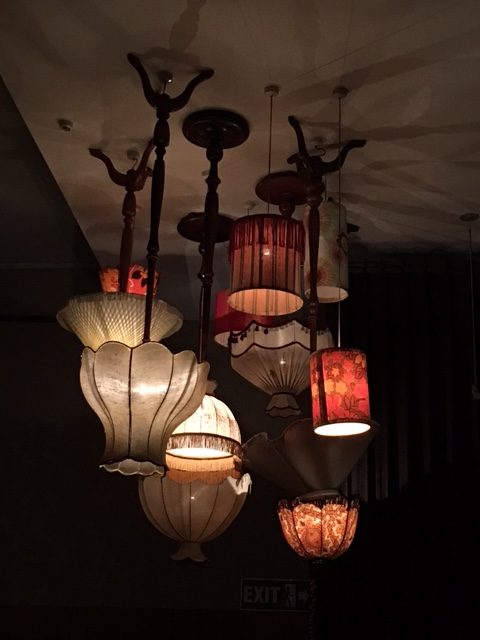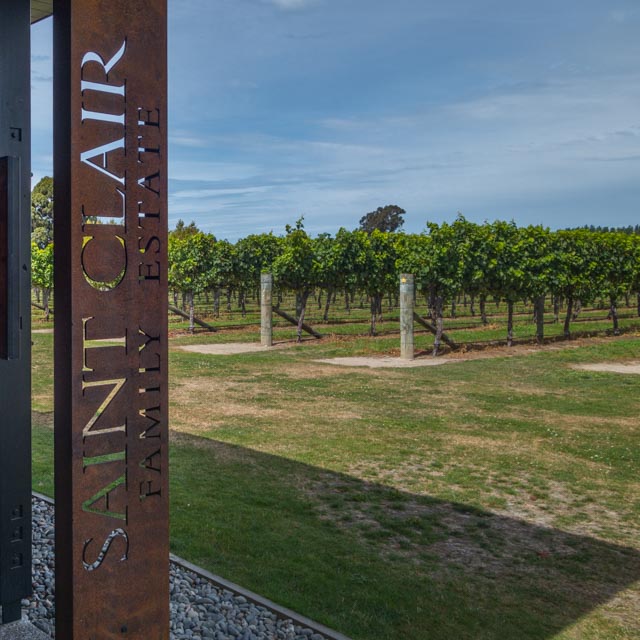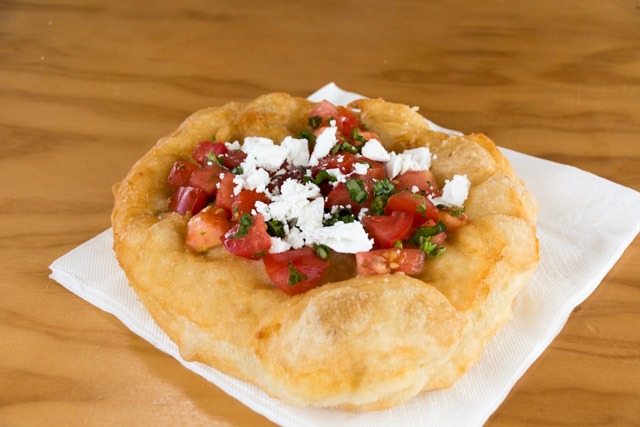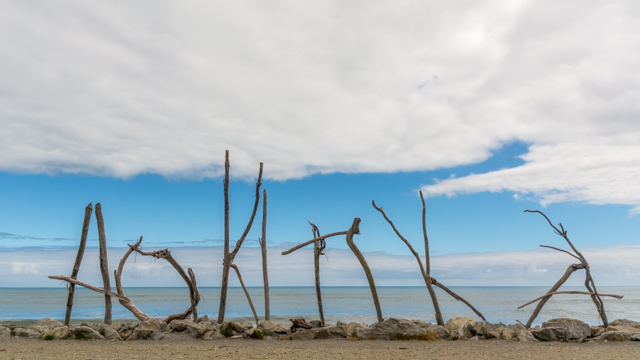

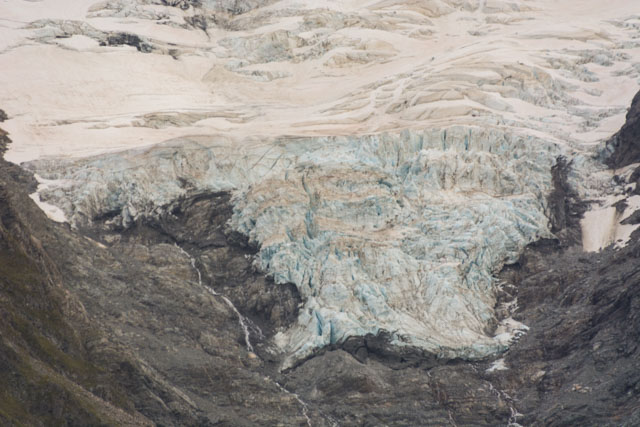





















Woke at 4:00, 4:15, 4:40… and finally 6:10 – tent life is not for us.
I walked down to the lake – it was still dark, just a little light from the moon. The wind had picked up so there were some small waves on the lake.
After breakfast, we drove down the far side of the lake towards Mount Cook, the tallest mountain in Australasia. Edmund Hilary and his team climbed Mount Cook in 1948 as part of their preparation for their attempt on Everest. Mount Cook village is the starting point for a number of mountain walks – a two-day trek goes over a pass and down to the west coast. We were doing a shorter walk up the Hooker Valley to a glacial lake. The path has a gentle incline up the valley but we were walking into a strong gusty wind, which slowed us down. There are three suspension bridges on the route, these bounce as people walk across them and swing in the wind too so it’s quite a struggle to get over them. On the left hand side of the valley, snowy peaks tower over us, precarious glaciers cling onto the sides. At the end of the walk, there’s a large glacial lake, which is a milky grey colour. We were on a tight time-table as usual so we only had 10 minutes to admire the view then we had to return. The sky was clearing so the peaks above us were now in the sun.
We had a quick coffee and toilet stop in XXX, a one-street town with a couple of shops then drove on to Oamara. We had 55 minutes to explore the town – not enough. The main street isn’t very interesting but there’s a Victorian area around the waterfront where the old buildings have been renovated and are now shops, cafés and museums. There’s a radio station broadcasting from the middle of a shop that sells old radios, a nightclub called The Penguin Club and a Steampunk museum. Another few hours to explore properly would have been good. There was a café recommended by Lonely Planet but they were closed by 15:30 despite the sign on the door saying 16:00.
We arrived at our camp in the small fishing village of Moeraki about 16:30. We dropped our bags, grabbed some bikes and headed for the wildlife sanctuary on the end of a nearby headland. The sanctuary is home to fur seals, rabbits, numerous seabirds and best of all – yellow-eyed penguins. These penguins are one of the rarest, there are thought to be only about 4000 of them currently. They are also number eight in my quest to see all seventeen penguin species.
The 4km ride was down a bumpy, hilly, unmade road – it wouldn’t have been quicker to walk but there wasn’t much in it. Once we arrived at the sanctuary, the first wildlife was a number of rabbits munching in the late sunshine. On top of grassy point, there was one penguin preening its feathers, another waddling out of the sea soon joined it. These are quite large penguins – nowhere near king or emperor size but bigger than most. Further round the headland, two more sat in the sun almost motionless. The penguins spend the day at sea feeding and return to land at night when they’re full.
On the other side of the point a number of young fur seals played in a rock pool. The view of the beaches down the coast as the sun got lower was lovely – could we cycle that far? No.
Our chalet had a large window looking out across the Moeraki harbour and right round the bay. We ate our dinner quickly and sat with a glass of Sauvignon Blanc – it was a warm day – watching the sky darken.






































































































